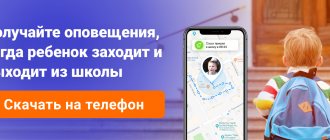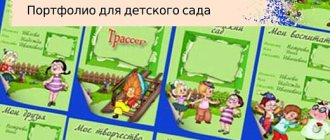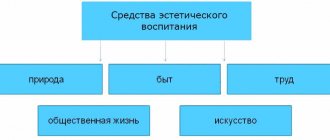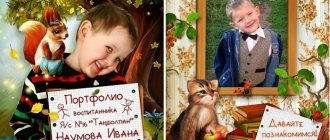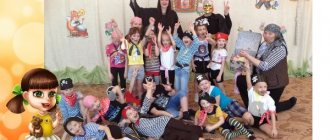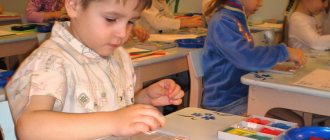In 2020, the requirements for educational standards have changed, so you will have to work longer than usual on the annual plan. Due to the pandemic and updates to the law, 5 major tasks need to be added to the plan.
We recommend that you start preparing your plan with new items, because they will take the most time. If you have already drawn up a plan without taking into account new tasks, write them down on the adjustment sheet:
- Last year's goals
- Remote technologies
- Anti-terrorism protection
- Networking
- Parent Consultation Center
- Approval and control of the annual plan
Approval and control of the annual plan
When a new annual plan has been drawn up, all tasks have been spelled out and their executors have been appointed, you need to agree on the final version of the plan. Usually it is agreed upon with the teaching council. To do this, send an electronic version of the plan to employees the day before the meeting so that they have time to familiarize themselves and prepare their proposals and questions. If disagreements arise at the meeting, revise the plan accordingly. If the teaching council has no objections, put the stamp “Approved”.
After the plan is approved, new tasks must be communicated and instructions issued to everyone involved in their implementation. Then you can post the annual plan on the official website. If you decide to publish it, please exclude from the public version any information that should not be shared publicly. For example, information about working with official documentation or details of the anti-terrorist protection plan for preschool educational institutions.
Once the team begins implementing the plan, monitor its progress at a monthly meeting. To do this, it is convenient to create a checklist in which employees will note what they have completed and what they have not. In this sheet you need to register the reporting activities, performers and deadlines.
If you found this article helpful, please rate it on the star scale below, with 5 stars being very helpful.
We want you to read only interesting materials, and we will be grateful for your feedback!
Changes in the law
The new federal law supplemented the previous law “On Education in the Russian Federation”. Briefly about the changes.
The concept of “education” has changed. In kindergarten, it is necessary to cultivate a sense of patriotism, a caring attitude towards nature, respect for the memory of the defenders of the Fatherland, for work and the older generation, for the laws and for oneself.
The definition of the educational program was specified. The program must include separate blocks of education and a calendar plan of educational work. The law allows organizations to independently develop the structure and content of the work program, therefore the pedagogical and parent councils of the kindergarten must work on the creation of modules.
We set deadlines for implementing changes. The law came into force on September 1, 2021, and by September 1, 2021, educational programs of kindergartens must already comply with this law. The state will verify compliance with the requirements during state accreditation.
They were required to tell parents about the changes.
Kindergarten staff should inform parents about the new curriculum focus.
On the one hand, these changes will make it possible to effectively combine educational processes in kindergarten and in the family. On the other hand, raising and educating children are inseparable, so there is no obvious point in separating the parenting plan into a separate document. However, state requirements cannot be ignored, because education has become a mandatory part of the educational program. Let's figure out how to implement innovations.
Digital hygiene
What are parents' biggest fears in the face of technology? Once they get sucked in like that, you can’t get them out. That virtual reality will become more attractive than real life. That someone out there, inside the global network, can deceive or offend a child.
So, playing together is also an excellent prevention. How will a child understand that this is an aggressive and angry game if you leave him alone with it? How will he know that enough is enough if you yourself are constantly “surfing”? How will he learn to recognize deception and bad intentions online if the interlocutor on the other side of the screen offers him something exciting, and you don’t ask anything at all, except whether the child washed his hands and learned the verse for the matinee?
Technology is a tool that you need to learn to use. In themselves they are neither harmful nor beneficial. And the parent should teach how to use it - by example, devoting time, attention and patience and showing HOW you should really treat this tool.
Technology in education is a beast that needs to be tamed and studied.
You can find out exactly how to do this at the EDCRUNCH 2021 conference.
Experts explained how the pandemic affected preschool education
— The measures taken to reduce the negative impact of COVID-19 in the field of preschool education have forced us to rethink theoretical approaches to understanding childhood. Based on the sanitary and epidemiological situation in individual regions, decisions were made about whether kindergartens could continue to operate during the pandemic,” says Alexander Veraksa, corresponding member of the Russian Academy of Education, Doctor of Psychology, head of the Department of Educational Psychology and Pedagogy, Faculty of Psychology, Moscow State University. — In a number of countries, all kindergartens were closed. A number of studies have appeared to analyze the impact of digitalization on children. It was the gadget that became an alternative to communication and traditional activities that many adults offered to children. Obviously, the world will not be the same, so a separate task today is to create educational content. Make sure that children’s lives in the digital world are connected with their entry into culture, and do not threaten their development.
Scientists note that prolonged exposure to screens during quarantine had a negative impact on young children; they began to move much less. Scientists from the Faculty of Physical Culture and Sports of Charles University in the Czech Republic note that a sedentary lifestyle limits the memory abilities of preschool children.
“Our study showed that 20% of children have an incorrect ratio of fat and muscle tissue. Children who move much less than their peers and are obese have a deterioration in their metabolic and nervous systems, emphasizes Martin Musalek, associate professor at the Faculty of Physical Education and Sports at Charles University.
What other important things do experts note? The measures taken for methodological and technical support during self-isolation mainly concerned general and higher education. The organization of distance education for preschool children has faded into the background. Parents were offered to engage with their children using educational digital resources, but there are difficulties here - not all of them take into account the peculiarities of teaching preschoolers. The results of international research led by Alexander Veraksa on the example of applications for teaching mathematics have shown that most applications for teaching mathematics are based on the use of trial and error, which contradicts the concept of developmental learning. 87% of such applications only report the correctness of the answer, and only the remaining 13% provide hints and instructions that whet the child’s interest, and very few involve dialogue with an adult.
— What did the market analysis of existing applications for teaching mathematics, available for download in Russia, show? There are not many applications that meet the needs of preschool age. And existing ones, as a rule, do not use the full potential of modern gadgets,” notes Vera Sukhikh, researcher at the Department of Educational Psychology and Pedagogy, Faculty of Psychology, Moscow State University.
What other problems are there in Russian preschool education? RANEPA together with MPADO prepared an expert report on this. The main problems in the field of preschool education were identified by respondents as excessive reporting (27.7% of responses), lack of space (18.7%), and inconsistency of the subject-development environment with the needs of children for the full implementation of educational activities (18.6%). Only 5.1% of respondents responded that there were no problems in their institutions.
"Other" technologies
Of course, artificial intelligence will not replace either a parent or a teacher, and the most advanced application will not save a lesson if it is taught by someone indifferent and stupid. But the beauty of modern technologies is that they are constantly changing and adapting to the child, so that learning is enjoyable and beneficial. Even if you are unlucky with the teacher, or the material is terribly boring.
What has EdTech already come up with to diversify learning and make it more effective?
You will be surprised, but these are good old video games. Professor Jordan Shapiro has dedicated his academic life and career to the study of games, and here's how he sums up the benefits: “The importance of games is that they help you understand a subject or problem in the context of a system. Rote learning, memorization, and questioning don't work because they focus on disparate facts. And computer games force players to interact with the problem being studied.”
Applications that teach mental arithmetic, the basics of geometry and the alphabet are already our reality. But that's not all. In the EdTech market there are more and more so-called non fiction apps – applications and services that combine online and offline. For example, they teach how to make something, and the material for the craft is the real thing: cardboard, glue, scissors. Or literally - they take you out for a walk. Quests, in which you need to complete tasks by finding places or objects on Google maps, are wildly popular among children.
Shapiro says that it is not at all necessary to chase new products and try to download everything that developers release. A regular video game will suffice. The main thing is to organize everything correctly. How?
Most learning is the result of daily work. Parents constantly, without noticing it, teach their children - by answering their seemingly simple questions, walking with them, reading to them, feeding them and putting them to bed. Playing together is also an opportunity to learn. Don't leave your child alone with the game. Sit down next to me. Ask questions. Explain it yourself. Be interested. Turn on the doubles mode and start fighting. Turn the simplest game into an opportunity to be together and learn something new.
Programs and technologies
O.I. Golubeva, A.S. Titova, T.B. Shemina. Artel.
Form of organization of the educational process The first part of the article told the story of the emergence of a unique form of organizing people's activities - the artel, described its features, principles and rules of the union of artel workers. A script for a master class for adults was offered to the attention of readers, since the introduction of a new form in the organization of the educational process should begin with the teaching staff.
Teaching children to learn
It is impossible to prepare for any one profession, if only because it has not yet been invented. This means that the most important thing is to teach children to learn and develop character qualities that will be useful everywhere.
Soft skills and emotional intelligence are popular today. But does everyone understand what it is, how to develop it and, most importantly, how it will help children in adulthood?
Neuropsychologist Erin Claybow says that emotional intelligence is, first of all, the ability to empathize. Empathy, the second name for emotional intelligence, comes in two types: emotional and intellectual. It is impossible to teach the first: tears or joy for another person are simply a reaction of our limbic system. But the second one is a real “superpower”. By teaching a child to understand how another person feels, we give him the power to literally “penetrate” his consciousness. What does this give? Oh, there are tons of possibilities here! This includes analyzing the causes, predicting results, the ability to find a common language with anyone, and adapting to the interlocutor or the situation so that everyone wins, understanding one’s own feelings, and building personal boundaries.
The main advantage, according to Professor Claybow, is that intellectual empathy allows a child to predict the future. There is no magic: knowing how your interlocutor feels, it is easier to find words to support him, console him or, conversely, put him in his place, without unnecessary melodrama and conflict.
How to teach this? And again, nothing supernatural. Start with the basics: discuss how the heroes of fairy tales and cartoons feel and what they are thinking now, and then ordinary people from everyday circles. How can you help in a difficult situation? What would the child do if he were in the place of the one who got into trouble? How will the hero most likely behave and why did the child make this conclusion?
Current conversation
A.I. Buchkova. Difficult situations in questions and answers. Introducing children to safety rules
In 2021, Current Conversation will continue in the same format. In the issues you will find useful information, a psychotherapeutic fairy tale, or a list of cartoons on issues that concern you. Some topics will be divided into two issues, others will be presented only with a fairy tale or a list of cartoons. The final episode will be dedicated solely to analyzing what you asked. There are many questions, we plan to answer them all. We continue to look forward to your current topics for discussion and suggestions for fairy tales and cartoons.
Competition "All-Russian test in psychology for educators"
The scientific and methodological journal “Preschool Education”, together with the department of “Preschool Pedagogy and Psychology” of the Moscow State Psychological and Pedagogical University, invites colleagues to test their knowledge in the field of psychology and the ability to use it in solving problem situations.
In the series of materials included in the competition, situations from educational practices will be described for analysis and solution. The “control” tasks are based on various psychological concepts and patterns.
The purpose of the cycle is the professional self-development of preschool education teachers.
Regulations on the competition
Physical development
A.P. Shcherbak. Encyclopedia of child physical culture. Outdoor game
Annotation. The article is devoted to the phenomenon of child physical culture - outdoor play, since it is both a means, a method, and a form of physical exercise. A classification of outdoor games is presented. An algorithm for conducting an outdoor game is described: selection, direct preparation, conduct and analysis of the game.
Current trends in modern education in preschool educational institutions article
Current trends in modern education in preschool educational institutions
Relevant trends of modern education in preschool educational institution
UDC 3 37.37.01/.09 37.02
This article discusses current trends in preschool educational institutions: smart learning, educational robotics, learning outside of class, educational games, social media, STEAM.
In this article modern trends in preschool educational institution are considered: smart training, educational robotics, training out of occupations, educational games, social media, STEAM.
Keywords: trends, education, technology, STEAM, smart learning, educational robotics, educational games, social media, training, classes.
Keywords: trends, education, technologies, STEAM, smart training, educational robotics, educational games, social media, training, occupations.
The 21st century is the century of globalization, new technologies and innovations, the century of new thinking and a new attitude to the changes taking place. The dynamism and interdependence of the ongoing changes dictate the need for a new approach to the education system. Trends in education are trends in its change.
Let us pay attention to the trends of the Federal State Educational Standard for Educational Education in order to correlate them with the possibilities of the considered educational trends[3].
1. The Federal State Educational Standard for Educational Education is based on a system-activity approach. It is necessary to individualize each child, regardless of his characteristics.
2. The main goal of the Federal State Educational Standard for Preschool Education is the full development of the individual based on the formation of universal educational actions, mastering and knowing the world (in the form of games, cognitive and research activities, creative activity).
3. The innovative nature of the standards is the requirements for the conditions for the implementation of education.
4. Educational areas, as well as activities outside the classroom, appear in the plans.
5. The Federal State Educational Standard for Education puts educational technology at the forefront. Over the past decade, the education system has been actively introducing pedagogical innovations and computer teaching methodologies in order to improve the quality of education and its results.
6. Value guidelines in the Federal State Educational Standard for Educational Education are shifted: from community and collectivism to individualization, from cognitive activity to socialization.
Over the past decade, the education system has been actively introducing pedagogical innovations and computer teaching methodologies in order to improve the quality of education and its results.
Smart learning is the first learning trend consisting of the merging of online distribution of software and content in the form of multimedia.
The main goal of Smart education is to create an environment that provides a high level of competitive education through the development of students’ knowledge and skills of modern society of the 21st century: cooperation, communication, social responsibility, the ability to think critically, quickly and efficiently solve problems [1, p.1 ].
The second trend is educational robotics, which takes a modern approach to introducing elements of technical creativity into the pedagogical process through the combination of design and programming.
Robotics classes provide opportunities for diversified development and formation of the most important competencies outlined in the new generation standards:
- skills in conducting experimental research: putting forward hypotheses, searching for solutions, conducting observations and measurements, establishing cause-and-effect relationships, assessing the influence of individual factors, processing and analyzing results;
- development of creative, imaginative, spatial, logical, critical thinking;
- development of communicative competence: teamwork (in pairs, groups) to develop and implement ideas, plan and implement activities, develop vocabulary and communication skills.
Learning outside of class is the third trend. This is a format of learning through activities, which may include research and application of knowledge in practice. Such training can take place in the form of a game, a quest, geocaching, photo hunting, or a hike. At the same time, children and their parents are “immersed” in history, culture, and nature, since certain tasks are set and appear before them.
The fourth trend in modern education is social media. The social service Facebook, Google services and tools, the Wiki website, podcasts for distributing sound files or videos on the Internet, blogs, YouTube video hosting - all this can and should be used in the classroom.
In conducting leisure, entertainment, games, and matinees, multimedia tools perform a special task: they clearly convey the thematic content of the event, accompany it with sound and light effects, which certainly increases the quality level of the event.
The introduction of educational games into teaching is the fifth trend of our time. Serious educational games are created for a variety of educational areas. There is, for example, a game that simulates the process of climate change, or a medical game to solve an environmental problem, and the like.
One of the main trends in global education is STEAM. The sixth trend is a new educational technology that combines several subject areas as a tool for developing critical thinking, research competencies and group work skills.
The abbreviation STEAM stands for:
S – science,
T – technology,
E – engineering,
A – art,
M – mathematics.
Or natural sciences, technology, engineering, creativity, mathematics - disciplines that are becoming the most popular in the modern world. Instead of studying each of the five disciplines separately, STEAM integrates them into a single learning framework.
At the International Conference “STEAM forward”, which was held in 2014 in Jerusalem, the following statements were made: “Involving children in STEAM. This education should begin from a very early preschool age, and therefore it is necessary to introduce programs in kindergartens[5].”
An important feature of working with this technology is the collective work on the project. STEAM – allows you to use the right hemisphere of the brain, which is responsible for creativity, emotions, and feelings. There are many examples of successful design work using this technology.
And no matter how successful traditional methods of education and training may be, modern reality requires the search for new and effective forms.
Instill the skills of independent learning throughout life, teach interaction at different levels, develop independent and critical thinking - these and many other principles constitute the strategy for the development of modern educational technologies[4].
If we are preparing our children for later life, then we must allow them to use those tools that will still become part of their daily life in the future.
Bibliography:
1.Ten A.S. and others. Smart training in the system of advanced training for teachers. Toolkit. -Almaty: JSC NTsPK "Orleu". 2014. -112 p.
2. Case Thurlow. Ten trends in modern education URL: https://www.hse.ru/news/media/63841790.html
3.Trends of modern education. Features of educational trends
URL: https://sites.google.com/site/trendsofedu/fgos
4. The course “Modern educational technologies and SMART” is your guide to new opportunities for using ICT in the classroom. URL: https://edguru.ru/blog/edutrends/
5. Tamara Strelnikova. What is STEAM education?
URL: https://www.unikaz.asia/ru/content/chto-takoe-steam-obrazovanie
Learning is not for show, but for life
Do kindergartens and schools prepare you for real life? And the question is not even what knowledge they provide, but how they test this knowledge. Independent assessments, tests, dictations - these forms of assessment are hopelessly outdated, if they were ever useful at all.
In real life there are no tests or tests, but skills and knowledge are tested strictly and often. Is it possible to forego formal assessment and, as in this case, see progress or failure?
To answer this question, we need to understand what exactly we are checking. What theory does the child remember or how can he use it? More likely, the second one. How are simple skills tested in life? Suddenly, without warning, without a chance to prepare in advance, and such a “test” lasts - nothing at all. And most importantly, the consequences are always more noticeable than a “two” in the magazine. Before he could tie his shoelaces, he was the last one to come for a walk. He scattered Lego all over the house - not only did he step on and inject himself, but his mother also deprived him of cartoons for the mess.
This is how artificial intelligence learns and tests. He analyzes the context in which the child is now, gives situational clues and creates circumstances that simultaneously teach and test skills. You can see how it works now.
For example, the Pica application. This is a virtual camera. The child’s task is to photograph everything that surrounds him and teach the robots that “live” in the application to recognize the colors of all these objects.
Or the MyBuddy app. It “listens” to how your child speaks English, evaluates pronunciation, and suggests learned words for repetition.
Artificial intelligence can also be used in group training and solve everyday problems in innovative ways. For example, don’t wait for a sick chess opponent to recover, but fight right now: artificial intelligence will select someone who is equal in strength. The same artificial intelligence will see weak points and offer tasks that fill the gaps. You no longer need to wait for the teacher to evaluate whether you are doing the craft correctly: the AI will prompt you in the process itself and guide you as needed.
